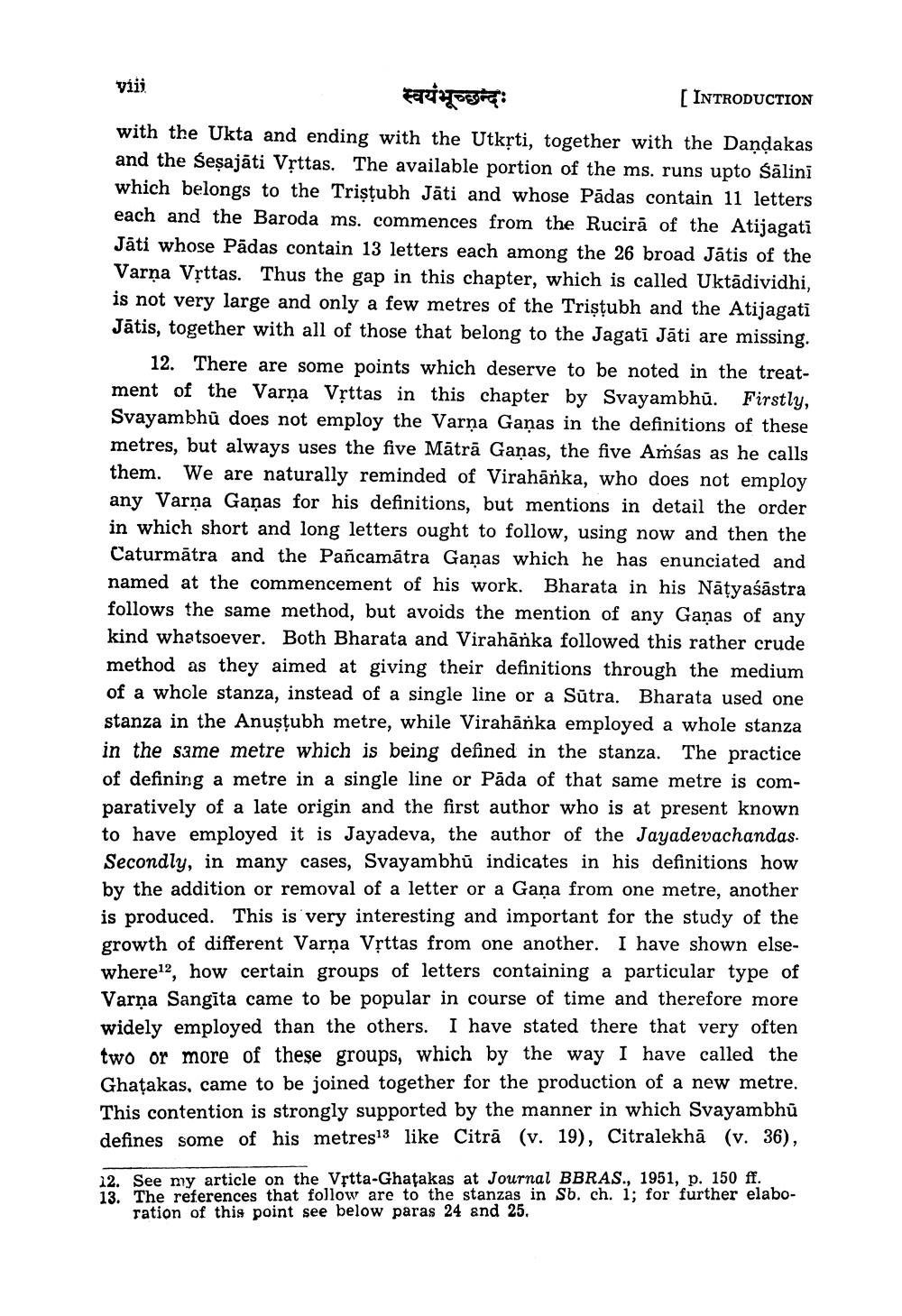________________
viii स्वयंभूच्छन्दः
[INTRODUCTION with the Ukta and ending with the Utkrti, together with the Dandakas and the Sesajāti Vịttas. The available portion of the ms. runs upto Śālini which belongs to the Triştubh Jāti and whose Pādas contain 11 letters each and the Baroda ms. commences from the Rucirā of the Atijagati Jāti whose Pädas contain 13 letters each among the 26 broad Jātis of the Varna Vrttas. Thus the gap in this chapter, which is called Uktādividhi, is not very large and only a few metres of the Triştubh and the Atijagati Jātis, together with all of those that belong to the Jagati Jāti are missing.
12. There are some points which deserve to be noted in the treatment of the Varņa Vșttas in this chapter by Svayambhū. Firstly, Svayambhů does not employ the Varna Gaņas in the definitions of these metres, but always uses the five Mātrā Ganas, the five Ambas as he calls them. We are naturally reminded of Virahānka, who does not employ any Varna Ganas for his definitions, but mentions in detail the order in which short and long letters ought to follow, using now and then the Caturmātra and the Pañcamātra Gaņas which he has enunciated and named at the commencement of his work. Bharata in his Nātyaśāstra follows the same method, but avoids the mention of any Ganas of any kind whatsoever. Both Bharata and Virahānka followed this rather crude method as they aimed at giving their definitions through the medium of a whole stanza, instead of a single line or a Sutra. Bharata used one stanza in the Anustubh metre, while Virahānka employed a whole stanza in the same metre which is being defined in the stanza. The practice of defining a metre in a single line or Pāda of that same metre is comparatively of a late origin and the first author who is at present known to have employed it is Jayadeva, the author of the Jayadevachandas. Secondly, in many cases, Svayambhū indicates in his definitions how by the addition or removal of a letter or a Gaņa from one metre, another is produced. This is very interesting and important for the study of the growth of different Varņa Vșttas from one another. I have shown elsewhere12, how certain groups of letters containing a particular type of Varņa Sangita came to be popular in course of time and therefore more widely employed than the others. I have stated there that very often two or more of these groups, which by the way I have called the Ghatakas, came to be joined together for the production of a new metre. This contention is strongly supported by the manner in which Svayambhū defines some of his metres13 like Citrā (v. 19), Citralekhā (v. 36).
12. See my article on the Vitta-Ghatakas at Journal BBRAS., 1951, p. 150 ff. 13. The references that follow are to the stanzas in Sb. ch. 1; for further elabo
ration of this point see below paras 24 and 25.




